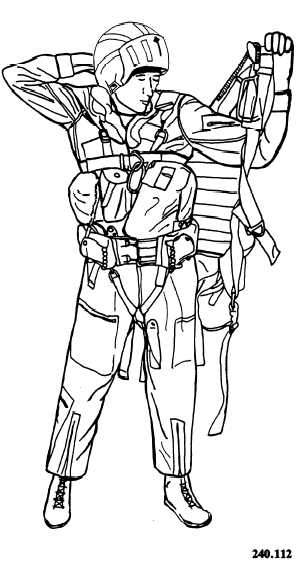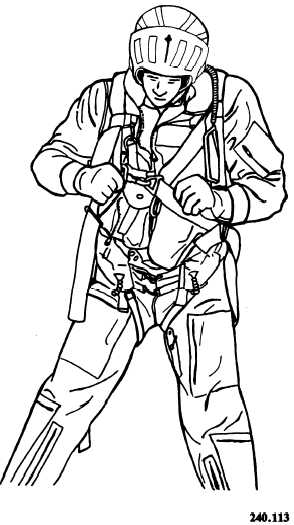buoyancy. An LPP life preserver that provides a buoyancy of 29 pounds is more than sufficient to keep a 200-pound man afloat for an indefinite length of time.
OPERATIONAL DIFFICULTIES OF LIFE PRESERVERS. - With all the equipment worn by aviators, life preservers must completely inflate to provide the buoyancy necessary to keep them afloat.
Partial inflation of the collar lobe on the LPA and LPU life preservers is a reported problem. Improper functioning of the hook-and-pile tapes that hold the collar lobes in the packed condition causes this problem. If the hook-and-pile tapes fail to open, simply pull them apart and the preserver will fully inflate the collar lobe.
BAILOUT PROCEDURES USING THE # FOUR-LINE RELEASE AND THE LPA LIFE PRESERVER. - Each aircraft has its own bailout procedure. The Naval Air Training and Operating Procedures Standardization (NATOPS) manual outlines the emergency procedures for each aircraft. We will discuss the emergency egress procedures for the P-3 aircraft.
When the command is given to bail out, the aircrewmen don their parachutes. We are using the NB-8 personal parachute to describe the bailout procedures. Grasp the shoulder straps as shown in figure 5-3 and place the parachute onto your back (fig. 5-4). Use the quick-release snap and the V-ring to attach the chest strap in place (fig. 5-5).
When you are donning the parachute over the LPA/LPU life preserver, be sure the harness

Figure 5-4. - Aircrewman slinging parachute onto back.

Figure 5-5. - Aircrewman attaching quick release V-ring.
Continue Reading